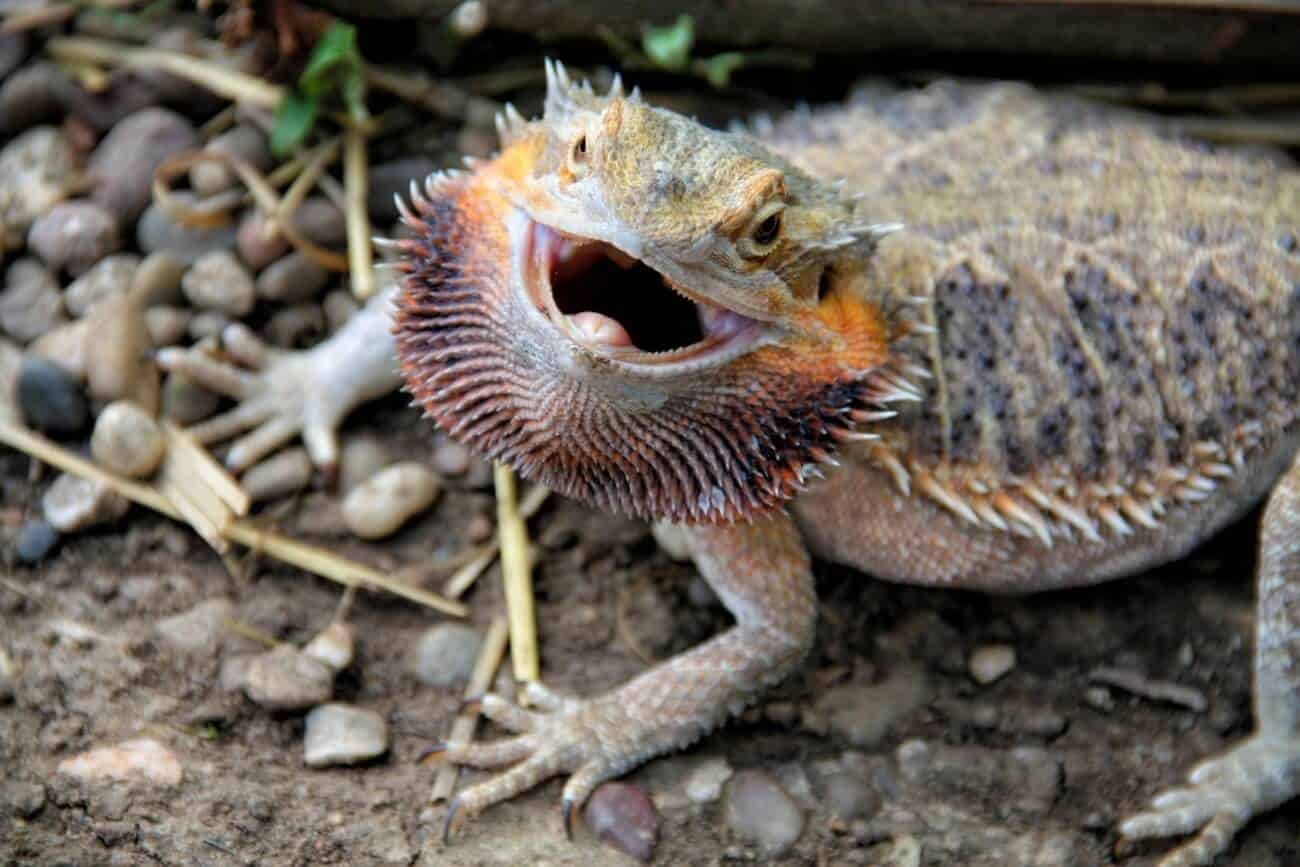/Hana/websitebanner1.png)
Tanks and Lighting
Bearded dragon's like their tanks to be bright and hot since they originated in Australia. Make sure their tank is large enough so they don't overheat. At least a 40 gallon or more. Glass tanks allow you to see your dragon better but make sure you get a screen lid because some bearded dragons can be escape artists.
What to Put in Their Tanks
- Basking platform-this is important because bearded dragons need to bask to stay warm and digest their food.
- Food dish-this is important so that your bearded dragon has a designated spot to go when he/she is hungry.
- Substrate-this is what covers the floor of the tank some bearded dragons like to dig but sand can be ingested or get in their eyes. Substrates vary.
- Water dish-bearded dragons are all unique and some like to drink while misted while others prefer drinking out of a water dish.
- Lighting-Find a lightbulb that gives off light and heat. Also get one that just gives off light. In their tank try to get a temperature gradient of about 20 degrees so if they get hot they can go to the cooler side of their tanks. Bearded dragons will have trouble sleeping at night if it is too bright so get a timer for your lights so they can sleep.
- Hide-a hide is necessary for a bearded dragon because they will need a place to sleep or go to feel safe.

Bearded Dragon Diet
- Food-When they are young they typically eat mostly insects such as roaches, beetles, worms, and larvae. As they grow older they eat less insects and more salad.
- Salad-Bearded dragons need salad to get water. You can give them a variety of things but to start, give them turnip greens, mustard greens, dandelion greens, and kale. You can give several other fruits and vegetables. Make sure to put in fresh greens every day.
- Water-They need water to drink and to keep their skin moisturized. You can mist once or twice a day as well as giving a bath every once in a while. But make sure the water doesn't go to high or they could drown.
Bearded Dragon Behaviors
- Eye bulging-the reason bearded dragons do this is not certain but a likely reason is if they are shedding around their eyes but if they do this with their eyes closed they may have something in their eyes.
- Beard puffing-Bearded dragons get their name from their "beards'' where they will puff up the skin under their throat making them look like they have a beard. They do this when they feel threatened to scare away predators.
- Oval pattern-When stressed bearded dragons become darker in color or get an oval like pattern on their underbellies.
- Licking-Some bearded dragons may lick their mouths as a sign that they are thirsty.
- Gaping or panting-Bearded dragons may do this to cool down which shouldn't be of concern unless there is no cool side to the enclosure then the dragon may be overheating
- Tail curling- This is commonly shown by adult bearded dragons as being alert.
- Arm waving-this can be both a submissive gesture and just showing they are a bearded dragon.

Getting a Bearded Dragon
When getting a bearded dragon check to make sure they have all their toes. Bearded dragons will eat each other if there isn't enough food available. Look to see if they look alert and awake. If not they may be sickly. If some bearded dragons look sick do not get others from that tank. Bearded dragon babies can be very small but make sure that they look good before getting it.You can also check to see what they are doing, are they eating, sleeping, or actively walking around. You can get them from a local pet shop or a well known breeder. Prices can vary from $30 to $100 depending on where you get it if it has a fancier coloration it may be priced higher.

Colors and Morphs
There are several morphs and colors that bearded dragons can have.
Morphs include regular, leatherback, and silkback. Regular are just your average bearded dragon, leatherbacks have smoother scales, and silkbacks have pretty much no scales at all.
Colors of bearded dragons can be red, translucent, white, albino, yellow, and orange. Other colors more specific exist but the rarest is white bearded dragons. Common colors tend to be things like tan or brown. There are also different patterns such as Tiger which is where there are horizontal lines on their backs, the S pattern where there is a curvy line running along their spine, and purple paradox.


For more information visit:

Growth Chart
| Age in months |
Weight in grams |
Length in inches |
| 1-3 |
4-110 |
3-11 |
| 4-7 |
41-327 |
9-18 |
| 8 |
252-327 |
14-20 |
| 9-10 |
280-360 |
16-22 |
| 11-12 |
350-465 |
16-24 |
- Female
- Smaller than males, thinner tails, more submissive.
- Male
- Broader head, Larger body, thicker tail, more territorial.

/Hana/websitebanner1.png)
/Hana/websitebanner1.png)





